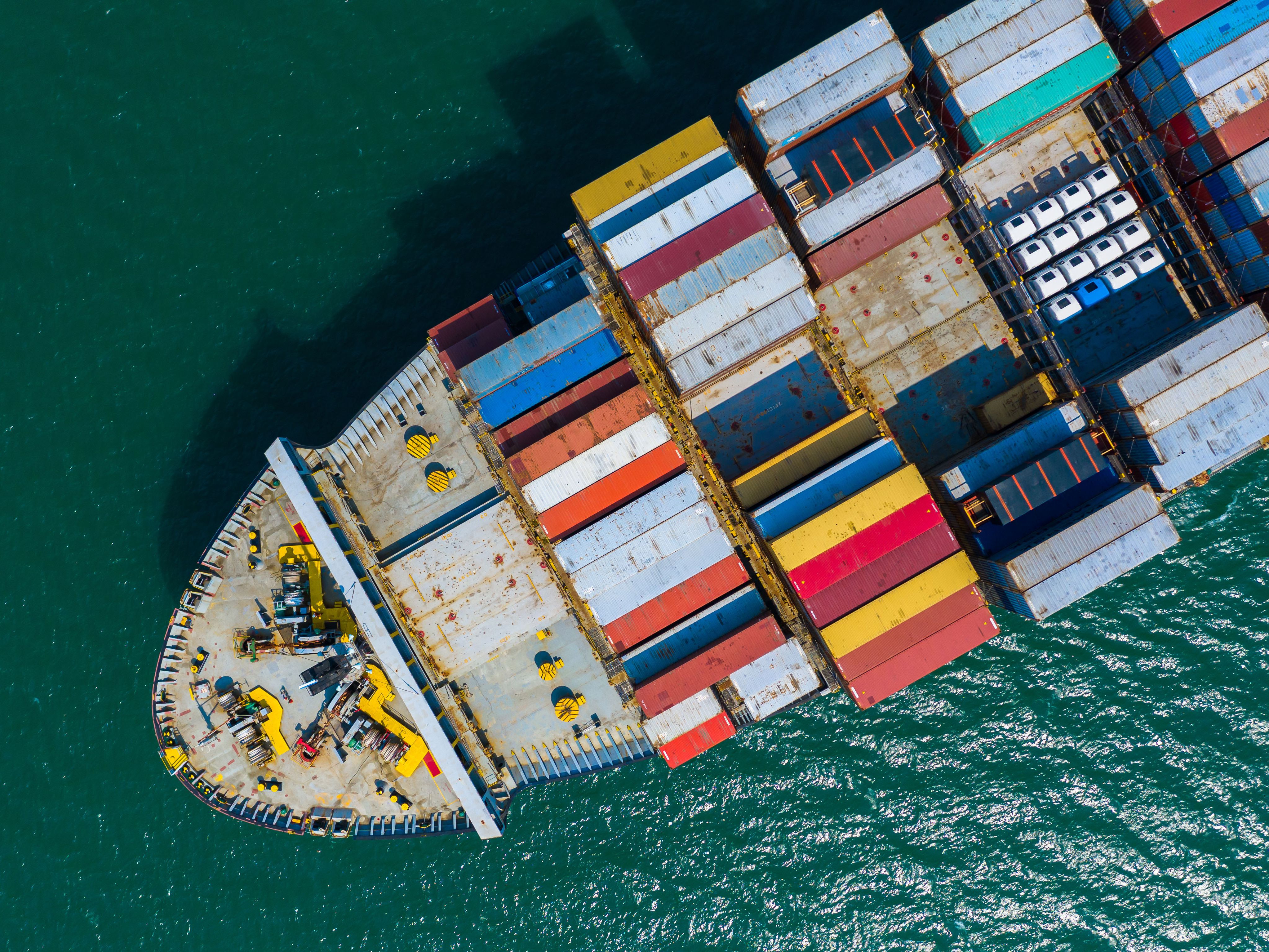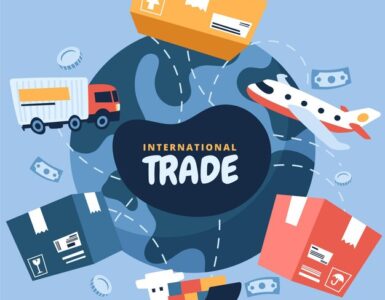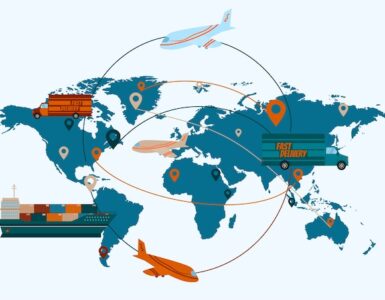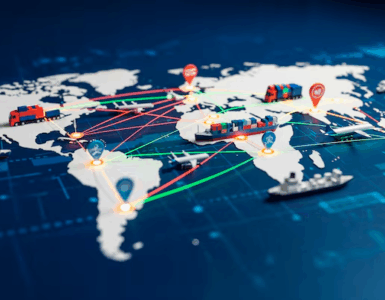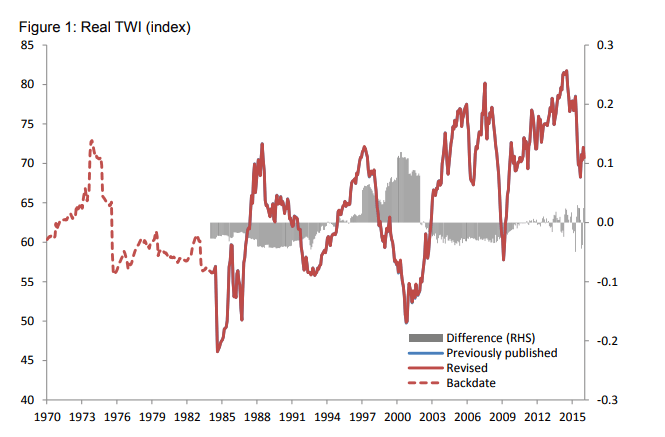/shippingtankerboatoceantrade_AdobeStock_279755856-7f55f339ad254631968d1bb37ef95433.jpeg)
If you can walk into a supermarket and find Costa Rican bananas, Brazilian coffee, and a bottle of South African wine, you’re experiencing the impacts of international trade.
International trade allows countries to expand their markets and access goods and services that otherwise may not have been available domestically. As a result of international trade, the market is more competitive. This ultimately results in more competitive pricing and brings a cheaper product home to the consumer.
Contents
Understanding International Trade
International trade was key to the rise of the global economy. In the global economy, supply and demand—and thus prices—both impact and are impacted by global events.
Political change in Asia, for example, could result in an increase in the cost of labor. This could increase the manufacturing costs for an American sneaker company that is based in Malaysia, which would then result in an increase in the price charged for a pair of sneakers that an American consumer might purchase at their local mall.
Imports and Exports
A product that is sold to the global market is called an export, and a product that is bought from the global market is an import. Imports and exports are accounted for in the current account section in a country’s balance of payments.
Global trade allows wealthy countries to use their resources—for example, labor, technology, or capital—more efficiently. Different countries are endowed with different assets and natural resources: land, labor, capital, and technology, etc. This allows some countries to produce the same good more efficiently—in other words, more quickly and at lower cost. Therefore, they may sell it more cheaply than other countries. If a country cannot efficiently produce an item, it can obtain it by trading with another country that can. This is known as specialization in international trade.
For example, England and Portugal have historically both benefited by specializing and trading according to their comparative advantages. Portugal has plentiful vineyards and can make wine at a low cost, while England is able to more cheaply manufacture cloth given its pastures are full of sheep. Each country would eventually recognize these facts and stop attempting to make the product that was more costly to generate domestically in favor of engaging in trade. Indeed, over time, England stopped producing wine, and Portugal stopped manufacturing cloth. Both countries saw that it was to their advantage to stop their efforts at producing these items at home and, instead, to trade with each other in order to acquire them.
Comparative Advantage
These two countries realized that they could produce more by focusing on those products for which they have a comparative advantage. In such a case, the Portuguese would begin to produce only wine, and the English only cotton. Each country can now create a specialized output of 20 units per year and trade equal proportions of both products. As such, each country now has access to both products at lower costs. We can see then that for both countries, the opportunity cost of producing both products is greater than the cost of specializing.
Comparative advantage can contrast with absolute advantage. Absolute advantage leads to unambiguous gains from specialization and trade only in cases wherein each producer has an absolute advantage in producing some good. If a producer lacked any absolute advantage, then they would never export anything. But we do see that countries without any clear absolute advantage do gain from trade because they have a comparative advantage.
Origins of Comparative Advantage
The theory of comparative advantage has been attributed to the English political economist David Ricardo. Comparative advantage is discussed in Ricardo’s book On the Principles of Political Economy and Taxation, published in 1817, although it has been suggested that Ricardo’s mentor, James Mill, likely originated the analysis and slipped it into Ricardo’s book on the sly.123
Comparative advantage, as we have shown above, famously showed how England and Portugal both benefit by specializing and trading according to their comparative advantages. In this case, Portugal was able to make wine at a low cost, while England was able to cheaply manufacture cloth. Ricardo predicted that each country would eventually recognize these facts and stop attempting to make the product that was more costly to generate.3
A more contemporary example of comparative advantage is China’s comparative advantage over the United States in the form of cheap labor. Chinese workers produce simple consumer goods at a much lower opportunity cost.4 The comparative advantage for the U.S. is in specialized, capital-intensive labor. American workers produce sophisticated goods or investment opportunities at lower opportunity costs. Specializing and trading along these lines benefit each country.
The theory of comparative advantage helps to explain why protectionism has been traditionally unsuccessful. If a country removes itself from an international trade agreement, or if a government imposes tariffs, it may produce an immediate local benefit in the form of new jobs. However, this is rarely a long-term solution to a trade problem. Eventually, that country will grow to be at a disadvantage relative to its neighbors: countries that were already better able to produce these items at a lower opportunity cost.
Criticisms of Comparative Advantage
Why doesn’t the world have open trading between countries? When there is free trade, why do some countries remain poor at the expense of others? There are many reasons, but the most influential is something that economists call rent seeking. Rent seeking occurs when one group organizes and lobbies the government to protect its interests.
Say, for example, the producers of American shoes understand and agree with the free-trade argument but also know that cheaper foreign shoes would negatively impact their narrow interests. Even if laborers would be most productive by switching from making shoes to making computers, nobody in the shoe industry wants to lose their job or see profits decrease in the short run.
This desire could lead the shoemakers to lobby for special tax breaks for their products or extra duties (or even outright bans) on foreign footwear. Appeals to save American jobs and preserve a time-honored American craft abound—even though, in the long run, American laborers would be relatively less productive and American consumers relatively poorer as a result of such protectionist tactics.
Other Possible Benefits of Trading Globally
International trade not only results in increased efficiency, but it also allows countries to participate in a global economy, encouraging the opportunity for foreign direct investment (FDI). In theory, economies can thus grow more efficiently and become competitive economic participants more easily.
For the receiving government, FDI is a means by which foreign currency and expertise can enter the country. It raises employment levels and, theoretically, leads to a growth in the gross domestic product (GDP). For the investor, FDI offers company expansion and growth, which means higher revenues.
Free Trade vs. Protectionism
As with all theories, there are opposing views. International trade has two contrasting views regarding the level of control placed on trade between countries.
Free trade
Free trade is the simpler of the two theories. This approach is also sometimes referred to as laissez-faire economics. With a laissez-faire approach, there are no restrictions on trade. The main idea is that supply and demand factors, operating on a global scale, will ensure that production happens efficiently. Therefore, nothing must be done to protect or promote trade and growth because market forces will do this automatically.
Protectionism holds that regulation of international trade is important to ensure that markets function properly. Advocates of this theory believe that market inefficiencies may hamper the benefits of international trade, and they aim to guide the market accordingly. Protectionism exists in many different forms, but the most common are tariffs, subsidies, and quotas. These strategies attempt to correct any inefficiency in the international market.
As international trade opens up the opportunity for specialization, and thus more efficient use of resources, it has the potential to maximize a country’s capacity to produce and acquire goods. Opponents of global free trade have argued, however, that international trade still allows for inefficiencies that leave developing nations compromised. What is certain is that the global economy is in a state of continual change. Thus, as it develops, so too must its participants.
[“source=investopedia”]
